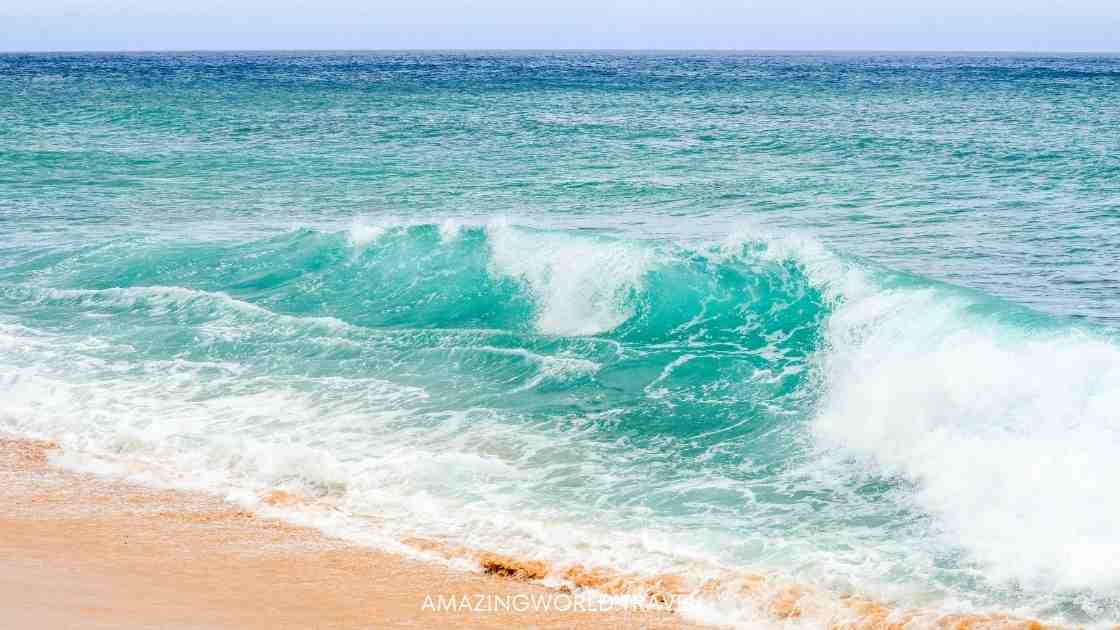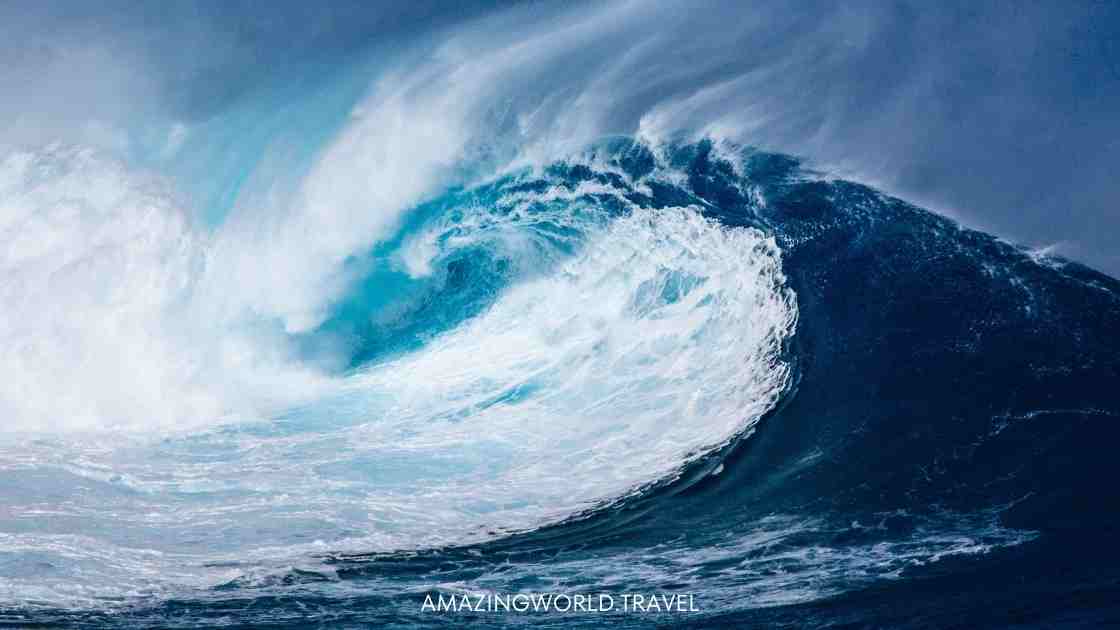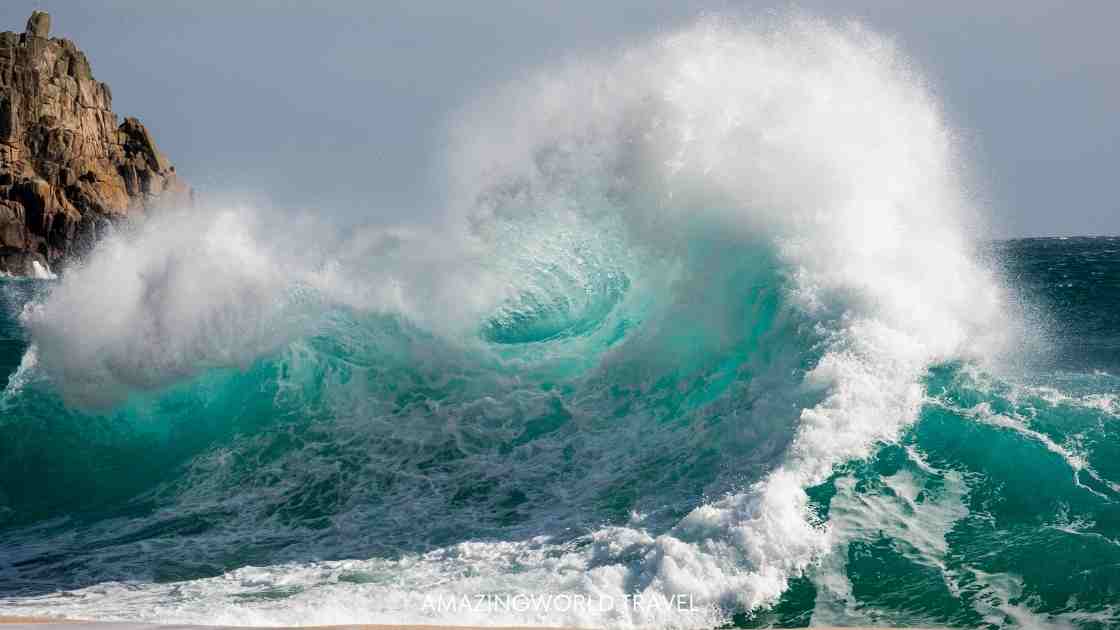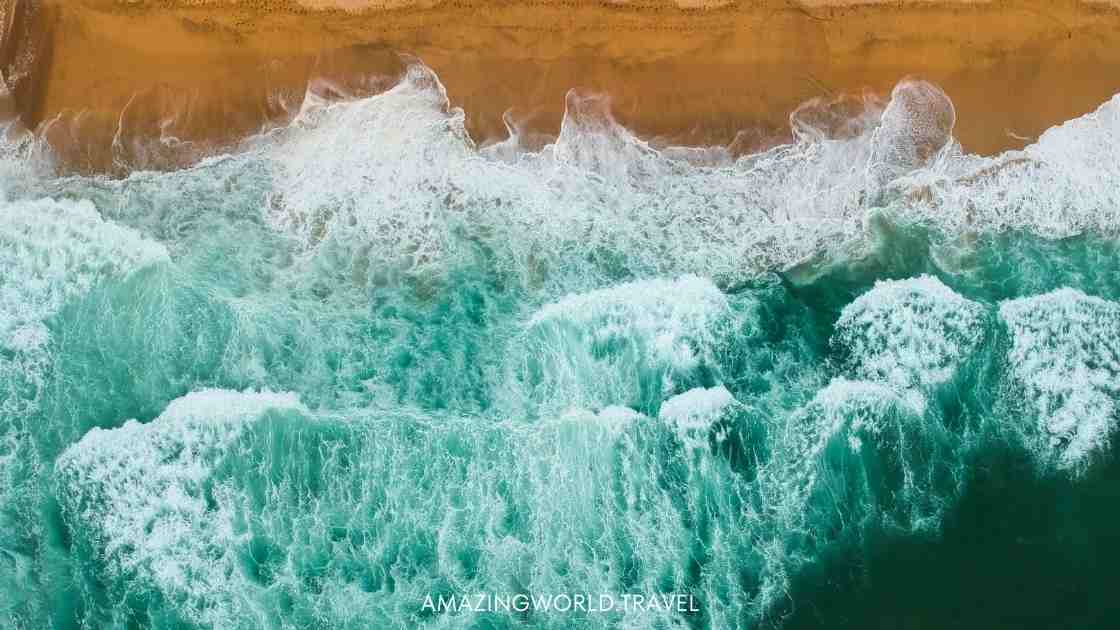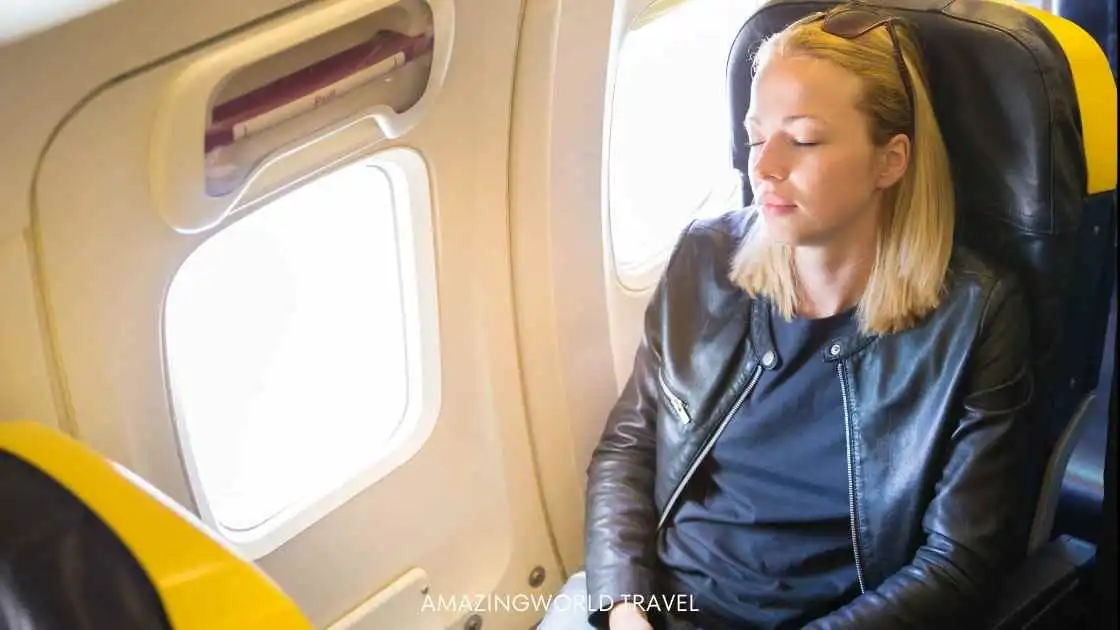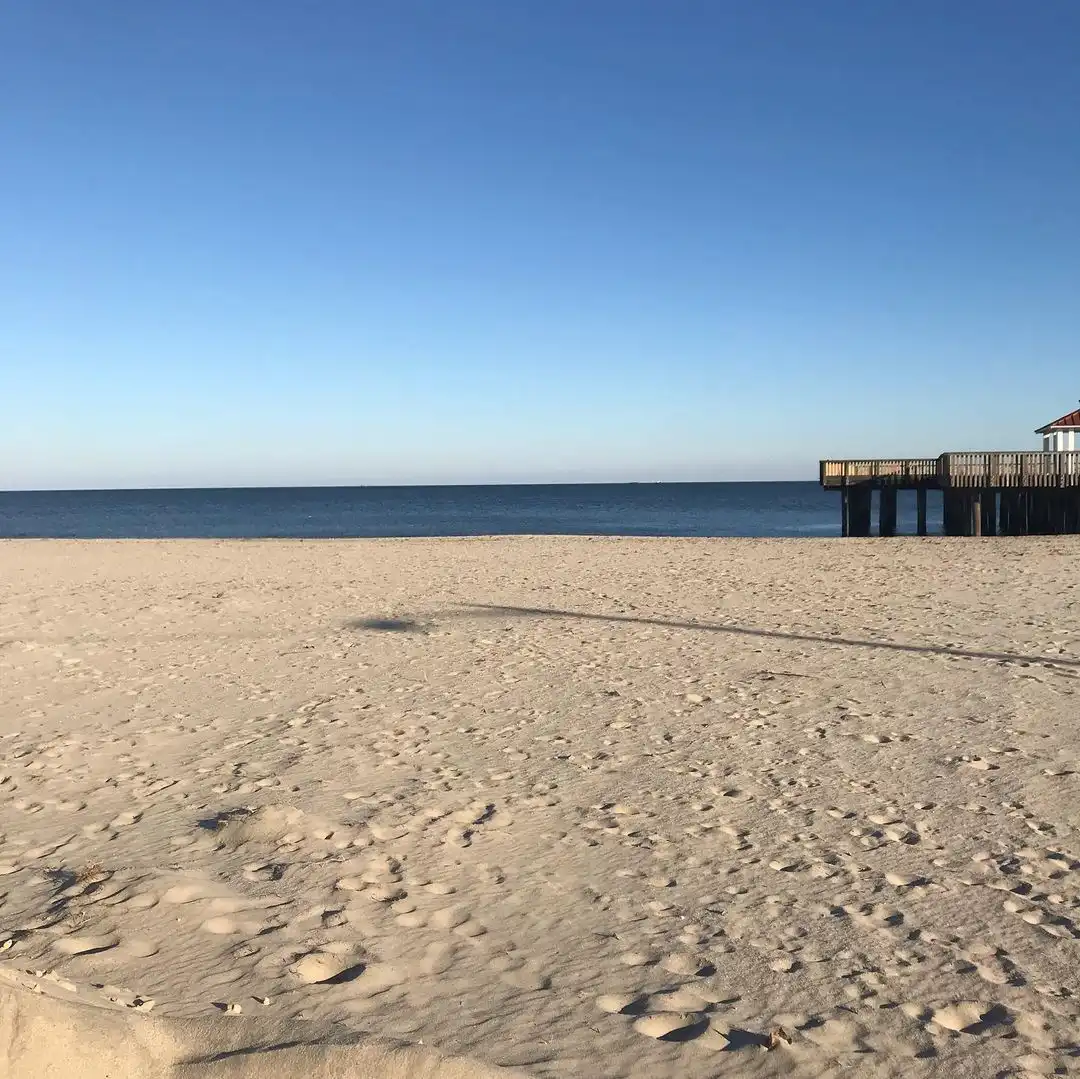The Science Behind Square Sea Waves in the Ocean: What They Are and Why They Matter- Travel Tips
Are you intrigued by the mysteries of the deep blue sea and the enigmatic forces that govern it? Do you find yourself captivated by the ocean’s ever-changing rhythms, from gentle swells to the more elusive square waves?
If so, you’re not alone in your curiosity about these captivating oceanographic phenomena. In this exploration, we’ll delve into the science behind square waves in the ocean, demystifying their formation and behavior.
What are square waves?
Square waves are a rare and dangerous type of ocean wave that is caused by the intersection of two or more swell systems from different directions. Swell systems are generated by storms and can travel thousands of miles across the ocean. When two swell systems meet at just the right angle, they can interact to form square waves.
Square waves are characterized by their square or checkerboard-like appearance. This is because the two swell systems are interfering with each other, creating a complex pattern of peaks and troughs. Square waves can be very large, reaching heights of up to 10 feet or more. They can also be very unpredictable, making them extremely dangerous for mariners and swimmers.
Square waves are most common in areas where two or more swell systems are likely to meet, such as capes, headlands, and offshore reefs. They are also more common in areas with strong currents, as currents can help to focus and amplify the swell systems.
Square waves can have several negative impacts. They can sink ships, damage coastal infrastructure, and erode beaches. They can also pose a hazard to swimmers and surfers, as they can be difficult to see and can create strong currents and rip tides.
Why are square waves important?
Square waves, despite their distinctive appearance and relatively lesser-known status compared to traditional sine waves, hold a significant role in the field of oceanography and beyond. Their importance can be understood from various angles:
| Aspect | Explanation |
| Maritime Safety | Square waves can pose serious hazards to ships, causing capsize and structural damage. Notable incidents like the “Draupner Wave” and the sinking of the MOL Comfort highlight their impact. These waves are large and unpredictable, often accompanied by strong currents and rip tides. |
| Coastal Erosion | Square waves are powerful and can lead to significant coastal erosion. When they break on the shore, they erode beaches, cliffs, and coastal protection measures. In 2018, square waves caused substantial beach erosion in California, resulting in millions of dollars in damage. |
| Marine Biology | Square waves can disrupt marine ecosystems by destroying habitats and killing marine life. An example is the mass mortality of fish and marine life in the Gulf of Maine in 2002, which caused significant damage to the fishing industry. |
| Offshore Energy Production | Square waves can damage offshore energy infrastructure, including oil rigs and wind turbines, due to their power and energy. In 2015, several oil rigs in the Gulf of Mexico were damaged by square waves, resulting in substantial financial losses for the industry. |
| Underwater Infrastructure | Square waves can harm underwater infrastructure like pipelines and cables due to their power and energy. In 2018, a transatlantic telecommunications cable was damaged by a square wave, causing service disruptions for millions of people worldwide. |
| Scientific Importance | Square waves are significant from a scientific perspective. They are rare and not fully understood, offering a unique opportunity for scientific exploration. By studying square waves, scientists can enhance their understanding of ocean dynamics and develop better prediction and mitigation methods. |
square waves have broad implications across maritime safety, coastal erosion, marine biology, offshore energy production, and underwater infrastructure. They also provide a fascinating field for scientific research, as their rarity and complexity make them an intriguing subject for exploration. Understanding square waves is essential for safeguarding lives, infrastructure, and marine ecosystems while advancing our knowledge of the ocean’s intricate dynamics.
How are square waves different from other types of waves?
Square waves are distinct from other types of waves, such as sine waves or regular ocean swells, in several key ways. These differences are mainly attributed to the unique characteristics of square waves, which give them their name and set them apart from more conventional wave patterns. Here’s how square waves differ from other types of waves:
Shape and Appearance:
-
- Square Waves: Square waves have a squared-off appearance with sharp, angular corners. They look almost like a series of flat steps or blocks, which is how they get their name.
- Sine Waves: Sine waves have a smooth and continuous curving shape, resembling the repetitive pattern of rolling ocean swells. They lack the sharp angles characteristic of square waves.
Frequency and Period:
-
- Square Waves: Square waves have a very distinct frequency and period. They are characterized by abrupt changes in wave direction, creating a unique wave pattern.
- Sine Waves: Sine waves have a continuous, regular, and well-defined oscillation with a constant frequency and period. They are smooth and undulating.
Formation:
-
- Square Waves: Square waves are typically formed when two sets of waves with different wave frequencies intersect or collide. This collision creates the squared-off appearance and unique characteristics of square waves.
- Sine Waves: Sine waves are more common and are the result of uniform and consistent wave patterns generated by natural forces like wind and ocean currents.
Unpredictability:
-
- Square Waves: Square waves are often less predictable than sine waves or regular ocean swells. Their sharp angles and sudden changes in direction can make them challenging to forecast accurately.
- Sine Waves: Sine waves, being regular and continuous, are generally more predictable and easier to model, making them a standard in wave analysis.
Occurrence:
-
- Square Waves: Square waves are less common than sine waves and are usually observed in specific conditions where wind patterns, currents, or geographical features interact to create this unique wave pattern.
- Sine Waves: Sine waves, or regular ocean swells, are the typical wave patterns found in most open waters and are associated with the steady, rhythmic motion of the sea.
Impact:
-
- Square Waves: Square waves can have a more disruptive impact on marine ecosystems, navigation, coastal infrastructure, and offshore installations due to their unpredictability and sharp, angular nature.
- Sine Waves: Sine waves are generally less disruptive and are easier to navigate and predict, making them a preferred choice for various maritime activities.
square waves stand out from other wave types due to their unique squared-off shape, unpredictable nature, and less common occurrence. Their distinct characteristics make them an intriguing subject for scientific study and practical consideration in areas where they may impact safety, ecology, and infrastructure.
Causes of square waves
The formation of square waves is a complex process influenced by various factors and interactions. Understanding the causes of square waves helps shed light on the origins of this unique oceanographic phenomenon. Here’s an elaboration on each of the causes you’ve mentioned:
Wind and Current Interactions: Square waves often originate from the interaction of different wind patterns and ocean currents. When winds from different directions collide, or when variations in wind speed occur, it can lead to the creation of square waves. These wind and current interactions generate chaotic wave patterns with sharp angles.
Bathymetry (Shape of the Seafloor): The underwater topography, or bathymetry, plays a crucial role in the formation of square waves. The shape of the seafloor can focus wave energy and create irregular wave patterns. Submerged features like underwater ridges, canyons, or abrupt changes in depth can cause waves to intersect at right angles, contributing to the development of square waves.
Swell and Refraction: Swell waves are long-period waves generated by distant storms. When these swell waves encounter changes in seafloor depth or underwater structures, such as islands or continental shelves, they can refract and converge at specific angles. This refraction effect can lead to the formation of square waves, especially in regions with complex coastlines.
Internal Waves: Internal waves are waves that occur beneath the ocean’s surface, typically due to differences in water density or temperature. These waves can propagate at different angles and interact with the surface waves. When internal waves and surface waves intersect, they can create square wave patterns.
Tide-Topography Interactions: The interaction between tidal currents and underwater features also contributes to square wave formation. Tides can induce changes in water flow and direction, especially in areas with complex topography. When tidal currents converge or interact with underwater structures, it can lead to the emergence of square waves.
In many cases, square waves are the result of a combination of these factors, and their formation is influenced by the specific conditions of a given location. The presence of square waves highlights the complex nature of the ocean’s dynamics and the intricate interplay between natural forces, making them a fascinating subject for scientific research and exploration.
Types of Square Waves
| type of square wave | Description |
| Cross sea | A cross sea is a square wave that is formed when two swell systems meet at an angle of 90 degrees or more. |
| Rogue wave | A rogue wave is a very large, unpredictable wave that can occur in any ocean. Rogue waves are often much larger than the surrounding waves, and they can appear suddenly and without warning. |
| Square wave set | A square wave set is a series of square waves that occur in close succession. |
| Square well | A square well is a square wave that is surrounded by smaller waves. |
| Box wave | A box wave is a square wave that has a steep face and a flat top. |
| Diamond wave | A diamond wave is a square wave that has a diamond-shaped profile. |
Here are some additional notes on each type of square wave:
- Cross seas are the most common type of square wave. They are often found in areas where two swell systems are likely to meet, such as capes, headlands, and offshore reefs.
- Rogue waves are rare, but they can be extremely dangerous. They have been known to sink ships and damage coastal infrastructure.
- Square wave sets are also relatively common. They can be found in a variety of ocean environments, including coastal waters and the open ocean.
- Square wells are less common than other types of square waves. They are often found in areas with strong currents and complex bathymetry.
- Box waves are also less common than other types of square waves. They are often found in areas with strong winds and currents.
- Diamond waves are the rarest type of square wave. They are thought to be caused by the interaction of multiple swell systems and internal waves.
The Science Behind Square Waves
Square waves are a type of ocean wave that is caused by the interaction of two or more swell systems from different directions. Swell systems are generated by storms and can travel thousands of miles across the ocean. When two swell systems meet at just the right angle, they can interact to form square waves.
The exact mechanism by which square waves form is still not fully understood, but it is thought to be related to a phenomenon called nonlinear wave interaction. Nonlinear wave interaction is a complex process that can produce a variety of different wave patterns, including square waves.
Square waves are often characterized by their square or checkerboard-like appearance. This is because the two swell systems are interfering with each other, creating a complex pattern of peaks and troughs. Square waves can be very large, reaching heights of up to 10 feet or more. They can also be very unpredictable, making them extremely dangerous for mariners and swimmers.
In addition to their size and unpredictability, square waves are also dangerous because they can generate strong currents and rip tides. Square waves can also cause significant coastal erosion and damage to marine ecosystems.
Factors that influence the formation of square waves:
- Wind and current interactions: Wind and current interactions can focus and amplify swell systems, making them more likely to interact with each other and form square waves.
- Bathymetry (shape of the seafloor): The shape of the seafloor can also influence the formation of square waves. For example, if a swell system travels over a shallow reef, the reef can focus and amplify the swell system.
- Swell and refraction: Swell refraction is the bending of swell systems as they travel over different depths of water. When a swell system refracts, it can change direction. If two swell systems refract in opposite directions, they can meet at a right angle and form square waves.
- Internal waves: Internal waves are waves that travel within the ocean. Internal waves can refract and interact with swell systems, just like swell systems can refract and interact with each other. This can lead to the formation of square waves.
- Tide-to-topography interactions: Tide-to-topography interactions are the interactions between tides and the seafloor. Tide-to-topography interactions can cause currents and eddies to form. These currents and eddies can focus and amplify swell systems, making them more likely to interact with each other and form square waves.
Scientists are still learning about the exact conditions that lead to the formation of square waves, but they believe that these factors play a major role.
Impacts of square waves
The impacts of square waves are wide-ranging and can significantly affect various aspects of our coastal and marine environments. Understanding these impacts is crucial for mitigating potential risks and adapting to the challenges posed by square waves. Here, we explore the effects of square waves on different areas:
Maritime Safety: Square waves pose a significant threat to maritime safety. Their unpredictability and abrupt nature make them challenging to navigate. Ships and vessels may encounter square waves without warning, leading to dangerous conditions at sea. These waves can result in vessel instability, capsize, or structural damage, putting the lives of mariners at risk.
Coastal Erosion: Coastal erosion is a well-documented impact of square waves. The powerful and energetic nature of square waves can lead to beach erosion, cliff erosion, and damage to coastal protection measures such as seawalls. This can have adverse effects on coastal communities and infrastructure, causing shoreline retreat and property damage.
Marine Biology: Square waves disrupt marine ecosystems. They can destroy marine habitats and lead to the mortality of marine life. These wave patterns can impact the distribution and behavior of marine organisms, including fish and plankton, which are crucial components of the marine food web. This, in turn, can have cascading effects on the entire ecosystem.
Offshore Energy Production: Offshore energy infrastructure, such as oil rigs and wind turbines, is vulnerable to damage from square waves. The power and energy carried by square waves can lead to structural damage or even the destruction of offshore installations. This can result in costly repairs and interruptions in energy production.
Underwater Infrastructure: Square waves can also damage underwater infrastructure, including pipelines and communication cables. When square waves impact these structures, they can cause damage or even lead to service disruptions. In the case of communication cables, this can affect internet connectivity and global communication networks.
Recognizing the potential consequences of square waves is essential for informed decision-making and safety measures. Mitigation strategies, including improved navigational aids, robust coastal defenses, and adaptive marine conservation efforts, are necessary to address these impacts. Additionally, ongoing research into square waves and their effects helps advance our understanding and better prepares us to manage the challenges presented by these unique oceanographic phenomena.
What happens if you get caught in a square wave?
Getting caught in a square wave can be a perilous and challenging experience due to the unique characteristics of these waves. Square waves are known for their abrupt changes in direction, sharp angles, and unpredictability, making them a hazard to vessels and swimmers. Here’s what can happen if you get caught in a square wave:
- Vessel Instability: For boats and ships, encountering a square wave can lead to a sudden loss of stability. The sharp corners and turbulent nature of square waves can result in vessels rocking or rolling unpredictably. This instability can be disorienting and dangerous for those on board.
- Capsizing: Square waves have the potential to capsize smaller vessels, especially those with low stability. When a boat or kayak is caught in the turbulence of a square wave, it can easily flip over, putting the occupants at risk of falling into the water.
- Structural Damage: Larger vessels are not immune to the dangers of square waves. The intense forces generated by these waves can place significant stress on a ship’s hull and superstructure. Prolonged exposure to square waves or direct impacts can lead to structural damage or even vessel failure.
- Turbulence and Disorientation: Swimmers caught in square waves may experience extreme turbulence and difficulty staying afloat. The unpredictable wave patterns can make it challenging to maintain buoyancy and swim to safety. Disorientation is common, and it may be challenging to discern up from down in the turbulent waters.
- Rip Currents and Strong Currents: Square waves can generate powerful rip currents and strong underwater currents. Swimmers caught in these currents can be rapidly carried away from shore, making it difficult to return to safety. This poses a significant drowning risk.
- Injury and Fatigue: In the chaotic environment of square waves, swimmers and those on boats are at an increased risk of injury. The potential for collisions with objects, equipment, or the vessel itself is heightened. Additionally, battling the turbulent waters can lead to rapid fatigue, making self-rescue more challenging.
To enhance safety and reduce the risks associated with square waves:
- Mariners should be vigilant and well-prepared, with proper safety equipment and knowledge of local sea conditions.
- Swimmers should avoid venturing into areas known for square waves, especially in poor weather conditions.
- Improved navigational aids and forecasting can assist vessels in avoiding areas prone to square waves.
Understanding the dangers of square waves is vital for safety at sea, and it underscores the importance of respecting the power of the ocean and taking necessary precautions to mitigate the risks associated with these unique wave patterns.
Square Waves vs. Other Ocean Phenomena
| spect | Square Waves | Regular Ocean Swells (Sine Waves) | Tsunamis | Rogue Waves |
| Wave Shape | Square or squared-off appearance | Smooth, continuous, sinusoidal shape | Long-period waves, often barely noticeable | Exceptionally large and abrupt |
| Formation | Complex interactions of wind, currents, bathymetry | Wind-driven and consistent ocean swells | Seismic activity, undersea disturbances | Typically result from extreme wave interactions |
| Predictability | Unpredictable, difficult to forecast | Relatively predictable based on weather patterns | Unpredictable timing, challenging forecasting | Highly unpredictable and can appear suddenly |
| Size and Height | Variable in size, can be large and powerful | Moderate, with a consistent and uniform pattern | Variable, but can be enormous and destructive | Exceptionally tall and unpredictable |
| Frequency and Period | Varies with conditions, not consistent | Consistent frequency and period | Irregular, often long periods between waves | Typically shorter periods between waves |
| Safety Implications | Pose navigational challenges and hazards | Generally safe for navigation | Devastating impact on coastal regions and safety | Highly hazardous to maritime activities |
| Ecological Impact | Disrupt marine ecosystems, influence habitat distribution | Limited impact on ecosystems | Can have catastrophic effects on marine life | Limited understanding of ecological impact |
| Ongoing Research | Ongoing scientific exploration to better understand behavior | Well-understood and used for navigation | Continuous research to improve forecasting and understanding | Ongoing study to predict and mitigate their occurrence |
| Appearance in Pop Culture | Lesser-known and not as prevalent in pop culture | Frequently depicted in media and art | Frequently portrayed in disaster movies | Often portrayed as a maritime hazard |
Traveling tips during Square Waves
Traveling during square waves can be challenging and potentially hazardous, whether you’re on a boat, ship, or engaging in coastal activities. These waves are characterized by their unpredictable and turbulent nature, making it essential to take precautions and follow safety guidelines. Here are some traveling tips to consider when dealing with square waves:
- Check Weather Forecasts: Before embarking on any maritime journey, always check the weather forecasts and be aware of the local sea conditions. Pay close attention to any reports or warnings related to square waves, which can provide crucial information for planning your trip.
- Vessel Inspection: If you’re on a boat or ship, ensure that the vessel is in good condition and that all safety equipment is present and functional. This includes life jackets, life rafts, and emergency communication devices. Regular maintenance and safety checks are paramount.
- Safety Training: If you’re a mariner or planning to travel on the water, consider undergoing safety training and familiarizing yourself with emergency procedures. This knowledge can be invaluable in case of unexpected square wave encounters.
- Vessel Size and Stability: The size and stability of your vessel matter. Smaller vessels are more vulnerable to capsizing in square waves, while larger and more stable vessels may have a better chance of handling these conditions. Choose your vessel wisely based on the nature of your journey.
- Navigation Aids: Use navigational aids such as GPS, radar, and charts to stay on course and avoid areas prone to square waves. Knowledge of local waters and navigational markers is also essential.
- Emergency Response Plan: Have a well-defined emergency response plan in place. Ensure that all passengers and crew know their roles and responsibilities in case of an emergency. Conduct regular drills to practice these procedures.
- Communication: Maintain open and reliable communication with shore-based authorities and other vessels. Be prepared to call for assistance if needed. Stay updated with maritime radio broadcasts and other sources of information.
- Stay Informed: While on the water, continue to monitor weather conditions and be alert to any changes. Keep an eye out for signs of square waves, such as rapidly changing wave patterns and rough seas.
- Avoid Coastal Activities: If you’re planning coastal activities such as swimming or beachcombing, be cautious during conditions of square waves. Strong rip currents and unpredictable wave patterns can make these activities dangerous. Heed local advisories and warnings.
- Stay Aboard During Storms: If you’re on a vessel and severe weather is approaching, it’s often safest to stay aboard and seek shelter. Attempting to navigate through square waves during a storm can be extremely risky.
- Emergency Supplies: Keep emergency supplies on hand, including first-aid kits, water, and non-perishable food. These supplies can sustain you in case of unforeseen delays or emergencies.
- Follow Regulations: Be sure to adhere to maritime regulations and guidelines specific to your region or country. These regulations are in place to enhance safety at sea.
Remember that safety should always be a top priority when traveling during square waves. If you’re unsure about the conditions or your ability to handle them, it’s advisable to postpone your journey or seek the advice of local maritime authorities. Being prepared, informed, and vigilant is crucial for safe travel in challenging sea conditions.
Final Thoughts on Square Waves in the Ocean
square waves in the ocean are a captivating and complex natural phenomenon that continues to intrigue scientists, mariners, and those who have encountered them. These waves, with their distinct squared-off appearance and unpredictable behavior, serve as a reminder of the intricate dynamics of our planet’s oceans.
How much did you like Our detailed Square Sea Waves: What They Are & Why They Occur? Review Also, please share these Blogs with your friends on social media.
Recommended

Meet David Hoper, a passionate travel Blog writer with 7+ years of experience in travel content. Through his exemplary storytelling and engaging narratives, he shares his experiences and brings destinations to life. With a keen eye for detail and a love for exploration, he has cultivated a diverse portfolio of travel blogs that inspire and inform readers worldwide.
